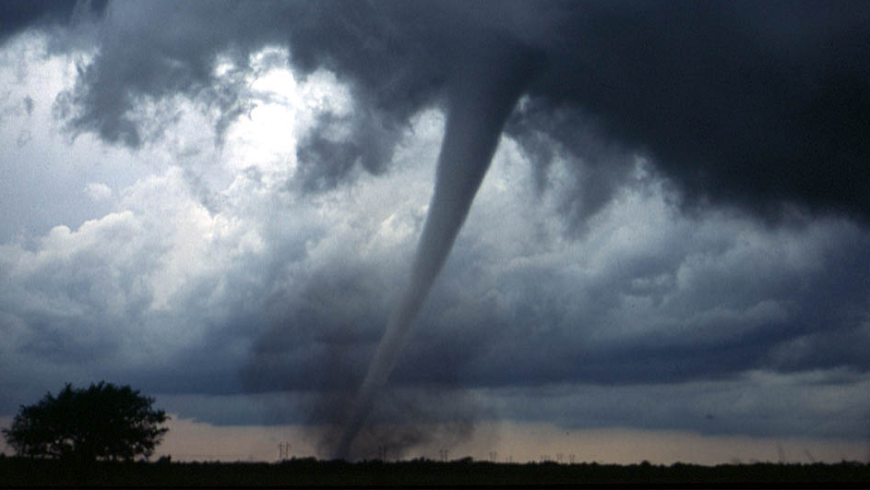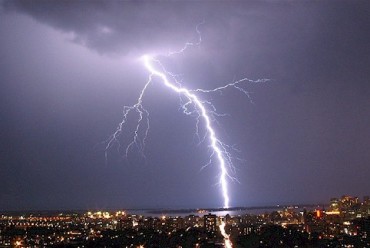Preparing Your Home For Storm Season
Meteorologists must be feeling a lot of job security these days, given the winter that never seemed to end and the summer-like storms and tornadoes appearing throughout the Midwest this spring.
Meanwhile, for the Atlantic coast, hurricane season begins June 1, and NASA satellites and ocean sensors are suggesting we might be in for a formidable El Niño. That means the water in the central and eastern Pacific could be warmer than normal, which could bring about more extreme storms.
If you’re worried that your house or condo isn’t prepared for a pounding, here are some steps you can take to prepare.
Pretend a storm is coming now. That is, don’t wait until you hear a hurricane, tornado or thunderstorm of the century is coming. Maria LaRosa, a meteorologist who co-hosts “AMHQ with Sam Champion” on The Weather Channel, thinks about storms day and night and says she always feels bad when she sees people standing in line, waiting for batteries and gas for the generator.
“Those are things you can take care of beforehand, so you don’t have to be scrambling at the last minute. Don’t be that person,” she advises.
Sabine Schoenberg, a home improvement blogger at sabineshome.com who lives in Greenwich, Connecticut, agrees. “You don’t want to get caught up in the long lines at the grocery store,” she says. “Dedicate a section in your pantry or pantry cabinet for water, freeze-dried and canned food for storm emergencies.” She advises storing three days’ worth of food.
Schoenberg also suggests having a generator ready. “They’re the new must-haves,” she says.
LaRosa has one that’s big enough to run a refrigerator and plug in a few things. “It isn’t a mega one that would run the whole house, but it’s one we feel comfortable having,” she says. “So that’s probably what I’d recommend – take stock of what you think you would need if you didn’t have electricity for a few days. You might want one for your sump pump, for instance, so your basement stays dry.”
This is also a great time to check in with your insurance adjuster if you haven’t thought about your homeowners insurance for some time.
“Before a disaster strikes is the time to sit down with your insurance agent to be certain you are properly insured,” says Greg Raab, operations director for Adjusters International, a public adjusting and disaster recovery company headquartered in Utica, New York. If you live in an area that has hurricanes and floods, he stresses the importance of getting insurance that will protect you.
Raab adds that standard homeowners policies don’t include flood insurance. “Though limited in what it covers, flood insurance is provided through the National Flood Insurance Program and works differently from standard homeowners coverage,” he says.
Secure the house. If a hurricane or tornado is making a beeline for your home, there isn’t much you can do to truly protect it. In that respect, LaRosa says, “A lot of times we show people (on television) boarding up windows if a huge storm is coming, but time and time again, it’s been proven that it’s a waste of time.”
If time is short and this looks like a punishing storm, LaRosa says you’re better off gathering family items and important paperwork, preparing your shelter and fine-tuning your evacuation route.
But you do want to secure your home. Eric Van De Steeg, owner of Van De Steeg Roofing & Associates in Oklahoma City, recommends installing window shutters, roof clips and garage door braces. Van De Steeg is referring to functional, non-decorative window shutters. Garage door braces are fastened to the garage door to help keep it from blowing away. Roof clips serve the same function, only they’re installed on a roof.
None of these items are exactly cheap. Multiple shutters can cost hundreds of dollars. Garage door braces typically run $100 to $200. Roof clips often cost less than a buck, but unless you’re something of a handyman, you’ll want to hire a professional to install them.
“We haven’t been seeing as many people utilizing garage door braces, roof clips and actual window shutters as you would think, even with the rise of severe weather and the change in weather patterns,” Van De Steeg admits. But he recommends that people who live in areas frequently hit by hurricanes or tornadoes to consider utilizing them.
“When you’re dealing with EF3-, 4- and 5-level tornadoes, you’re facing wind gusts of up to over 200 mph. It’s always smart to be overprepared than underprepared. We don’t want people to lose their homes,” Van De Steeg says.
Tree care. Sure, they’re beautiful and give us oxygen, but some trees are your enemy, just biding their time until lightning causes them to come crashing through the living room window.
If you’re unsure about a tree’s health, consider hiring an arborist to check it out and possibly remove it (expect to pay at least a few hundred dollars). But you may be able to determine on your own if it’s healthy or not. Look for bare branches at the top of the tree, which might be a sign your tree is in poor shape. Also, take a look near the base. Are roots sprawled out at one side of the tree? That could be a sign your tree will eventually fall over.
If you have any questions or need help, do not hesitate to contact us. We are open 24 hours a day and 7 days a week in order to help you at a moments notice. Call us today at 704-579-6460!








No Comments